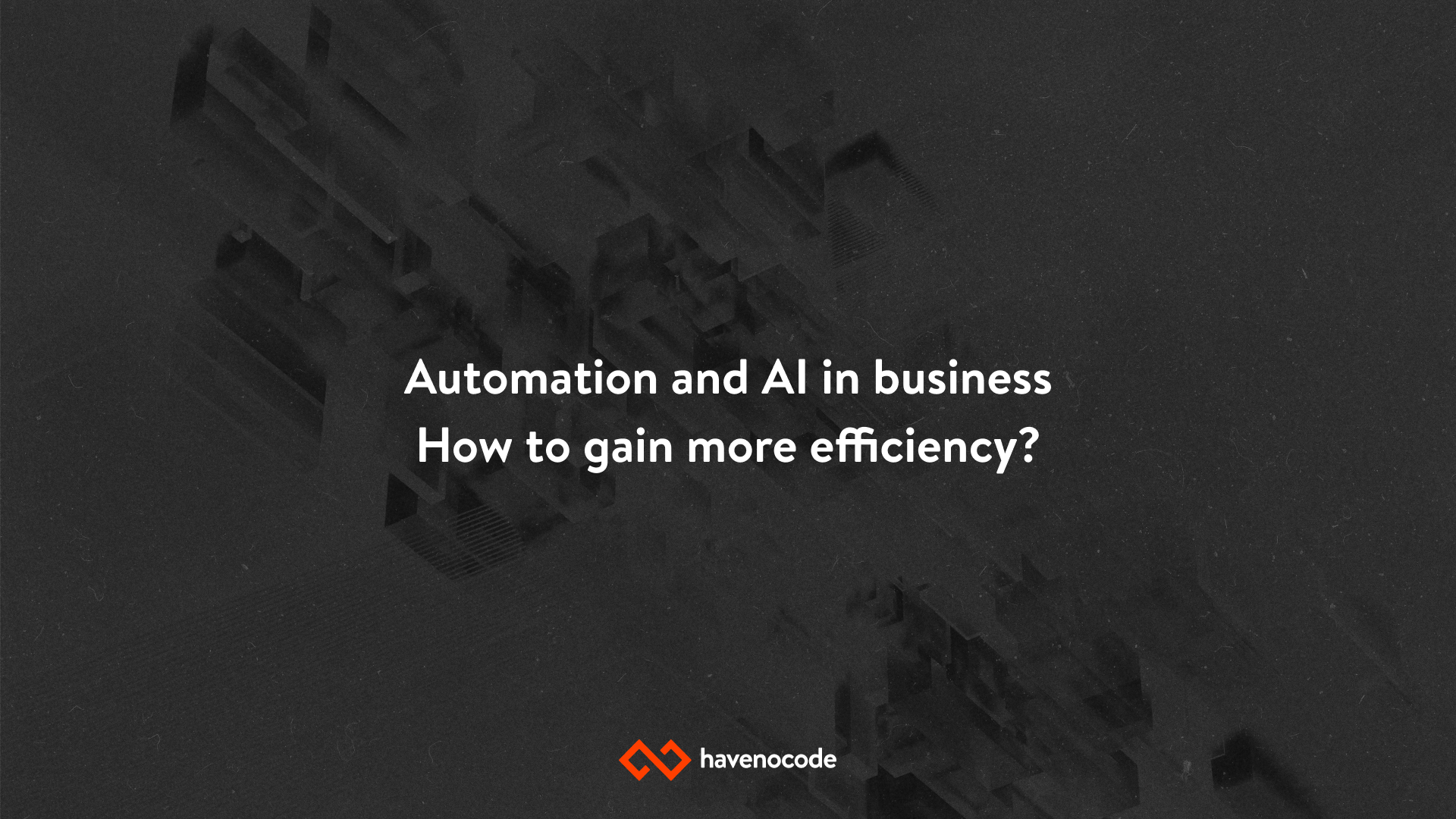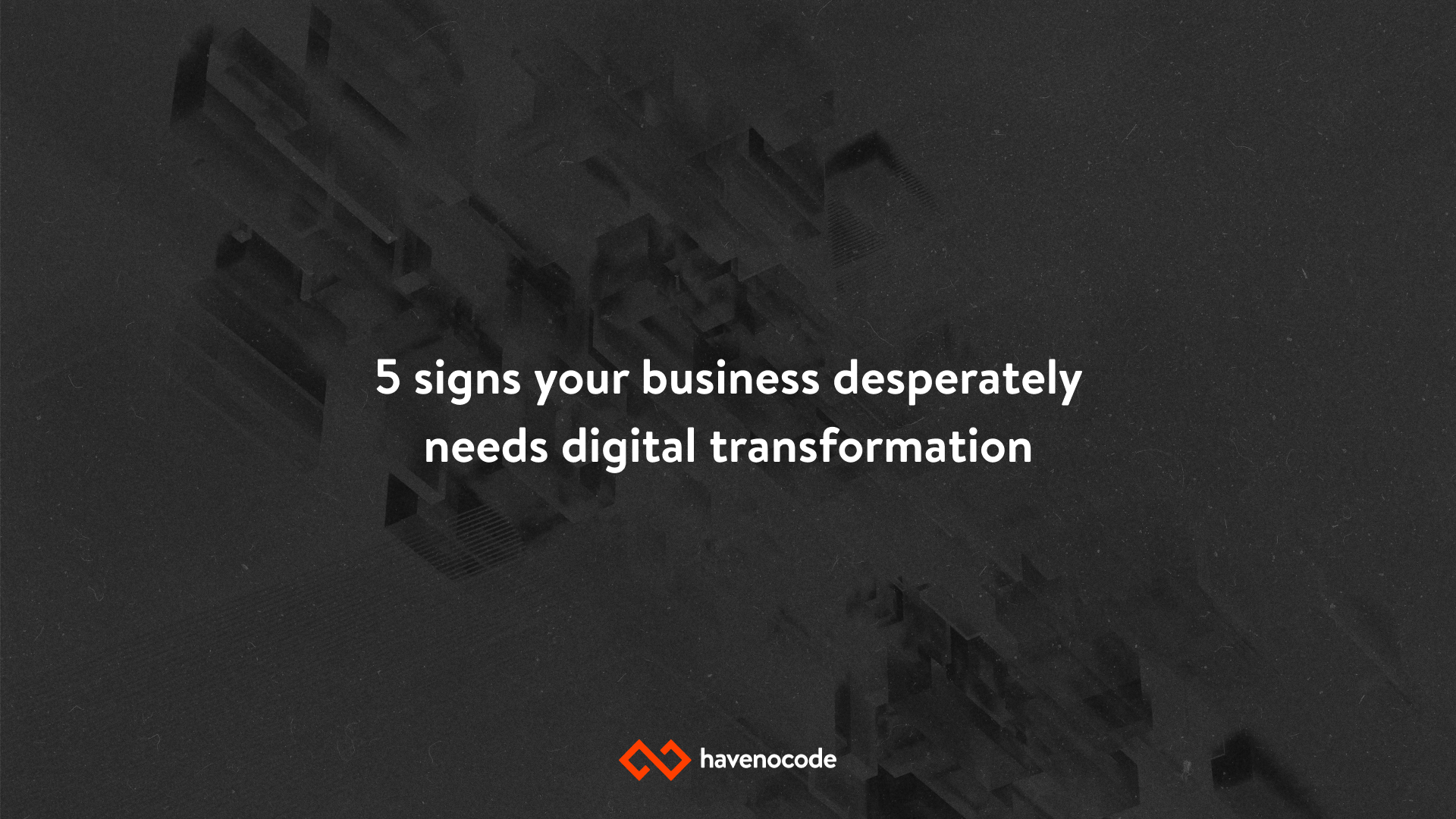-min.png)
Modern technology makes it possible for those who don't have coding skills to build full-blown websites and applications. But is no-code a solution for everyone, as some try to convince us? We address this dilemma in our newest article, comparing no-code and full-code approaches. Check which one is for you!
Using no-code solutions, you can build websites and applications without knowing any programming languages. Does that mean that no code is involved, as the name suggests? Not at all - the code is still the basis of your work, but in this approach, it kind of stays underneath, allowing you to work on predefined elements.
In accordance with the WYSIWYG (what you see is what you get), you implement changes on the surface. However, that does not mean you only have an impact on the visual side of the solution. You have full flexibility in designing the structure and architecture of the app, its database, workflows, SEO etc.
When we think about app development, we usually imagine a process that starts with an idea that is later translated into code by the team of coders with appropriate tech stack. Depending on the methodology, this process can adopt different shapes and take different turns, but, in general, every road leads to the moment in which the requirements of the application get translated into the code.
Depending on what we are building, we may have to engage different tech stacks. Some applications are front-end only, while others require taking care of what's behind the scenes as well. Coding, however, is always at the core of the implementation.
Full code works perfectly for projects that try to solve complex problems simultaneously. It should also be a match in the case of solutions that may require many integrations and continuous scaling. If you are developing a solution for the banking or insurance market, the full code approach may correspond to your needs better. A big part of no-code platforms still lacks compliance with the demanding legal requirements of these niches.
However, full code can also be costly and time-consuming, eating up your budget at a fast pace. Also, if you don't have a team with an appropriate tech stack at your disposal, you need to find the right developers, and that takes time (and money). It will take a while before they fully integrate and start delivering the results you expect.
Does it have to be this way? Not at all - plenty of solutions allow you to skip the coding part without compromising the quality. Don't get skeptical - we are not talking about the ready-made website builders that require you to operate on templates, which, of course, can be really limiting.
There are solutions, like, for instance, Bubble, that provide you with much more creative liberty. Using such no-code platforms, you can freely scale your solution, add new functionalities, and design the interface exactly the way you want it. Let's take a closer look at the opportunities no-code platforms provide.
No-code development cuts project time, eliminating coding and all related aspects, like fixing bugs. As a result, you have more time to spend polishing your solution instead of putting down fires in the development process. It is a win-win: you can deliver your app to the market faster while taking all the time you need to perfect all the functionalities, user experience, and interface.
The cost-cutting potential of no-code is also not without importance, particularly when it comes to more complex projects that would otherwise require hiring developers with extensive tech stacks. With no-code, you skip that part.
And what about the minuses? When talking about no-code development, the most mentioned benefit is usually the capability of doing things all by yourself without hiring an external team. That can be true; however, you will achieve the best results if you hire a professional team with expertise in no-code. We do not recommend treating it as a cheaper alternative but rather as an opportunity to bring your solution to the next level.
As you can see, both approaches have their pros and cons - it all depends on your priorities and the specifics of your project. If you need support with picking the right model or developing the app in a no-code approach, drop us a line - we would love to help you.

Discover how automation and artificial intelligence can boost your company’s efficiency by up to 30% without high costs or long implementation cycles.
Automation and AI in business – how to gain 30% more efficiency without a major overhaul
Boost your team's productivity by 30% with smart AI and automation—no massive budget or full IT overhaul needed. Start small, scale fast.
5 signs your business desperately needs digital transformation
Freight digitization with no-code streamlines processes, cuts costs, and improves customer service. Discover how to implement it efficiently.
How to Automate Logistics Processes and Improve Customer Service in a Freight Company?Looking for insightful articles about no-code and low-code technologies? Discover the latest on no-code and low-code development on our blog! Learn how to create software, set up websites, and build mobile apps without coding knowledge using low-code and no-code solutions.
Explore expert articles that introduce you to the best no-code platforms and top low-code development platforms, including Bubble, Webflow, Flutter Flow, Xano, and many more development tools. Whether you're learning the basics or diving into advanced techniques, become a skilled no-code developer or citizen developer with our guidance.
Our No Code Low Code Blog will immerse you in a world of innovative technologies where software creation is easy and enjoyable. Increase your productivity and improve your business processes with no-code and low-code platforms. If your goal is to develop an app, build an MVP, or establish a website with no-code/low-code technology, you've come to the right place! Gain both technical and business knowledge now with havenocode, your ultimate no-code and low-code resource!